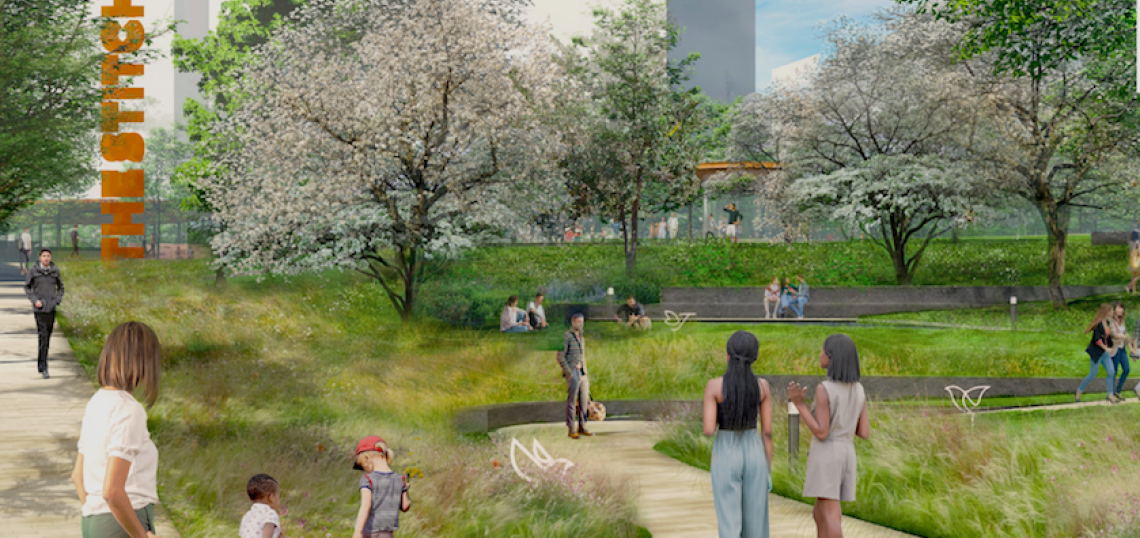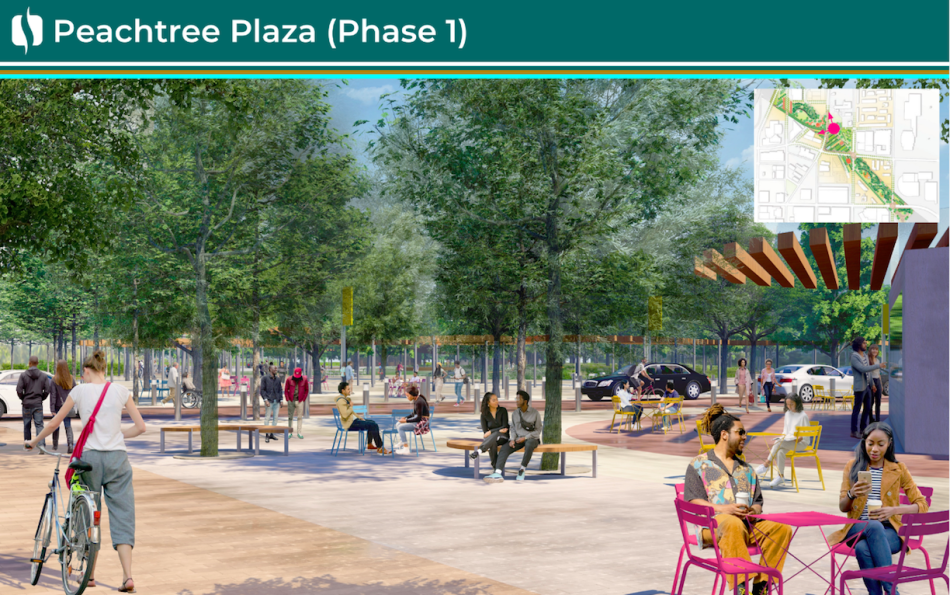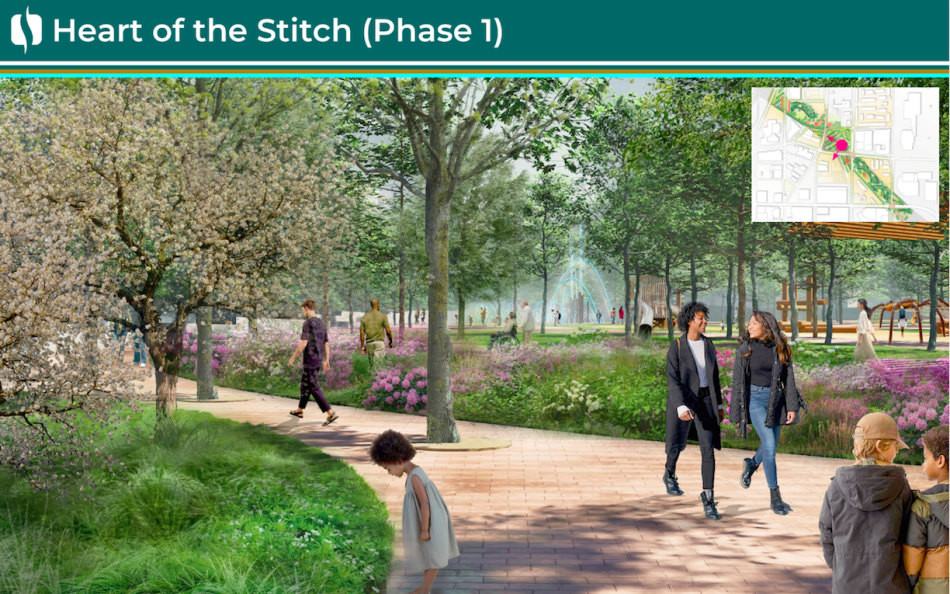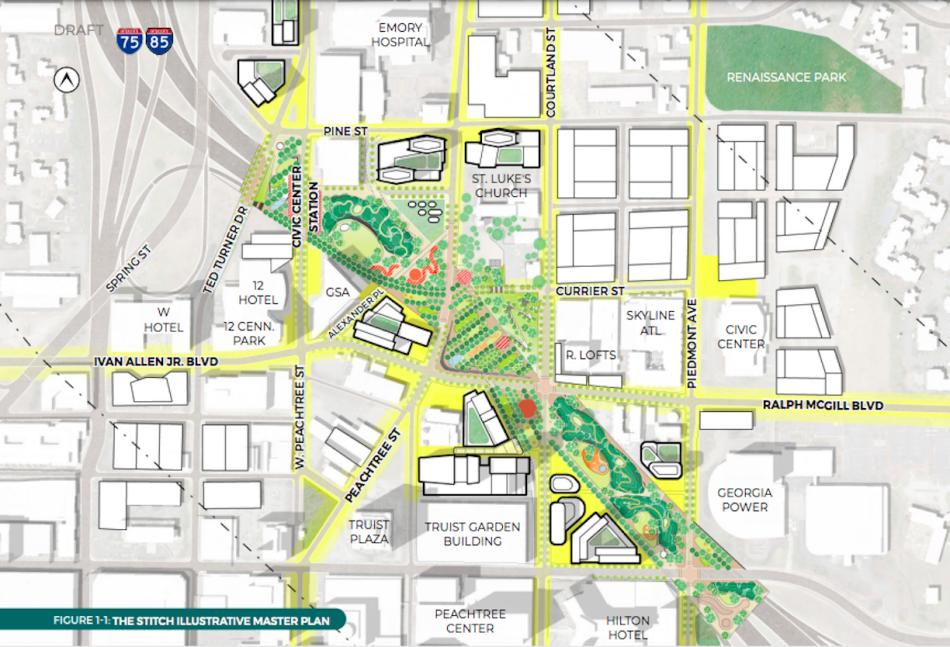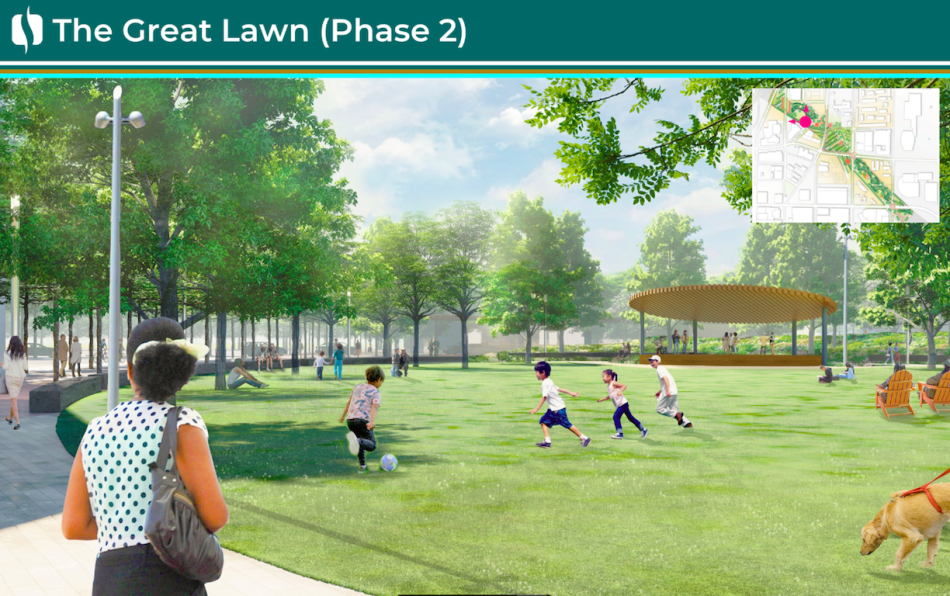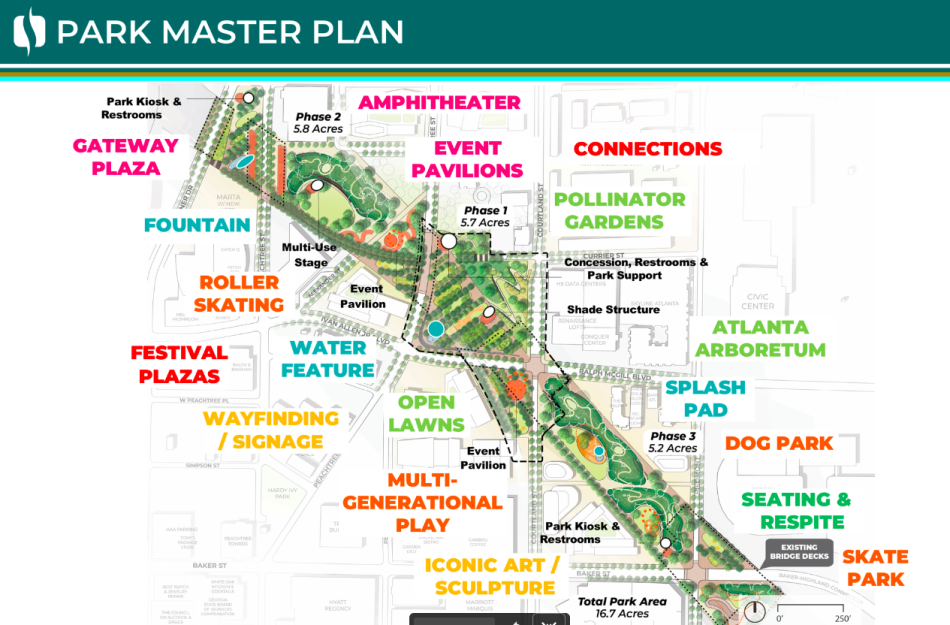Project leaders behind the only highway-capping proposal left on the table in downtown and Midtown revealed today new insights into how the ambitious, multi-phase project could look, function, and be paid for.
An executive summary for the Stitch project hosted by Central Atlanta Progress, Atlanta Downtown Improvement District, and other members of the development team provided fresh renderings and news that the project’s master plan calls for a special tax district to be created to fund later phases and upkeep. The tax would apply to commercial and multifamily property owners in the area.
Current projections call for 14 acres of new public space being created over the downtown Connector—finishing in roughly 12 years, or sometime in 2036, pending funding.
The more encouraging news is that Stitch’s initial phase (now envisioned as 5.7 acres) has secured about $200 million needed to build it, mostly from a federal Reconnecting Communities and Neighborhoods grant.
Engineering work continues, and the forecast calls for breaking ground in 2026, capping the highway between Peachtree and Courtland streets and upgrading connections to existing street corridors.
The initial phase, as fresh renderings shared by CAP and ADID officials illustrate, is envisioned as the green heart of the project, with pathways, native gardens, a plaza, shade structures, restrooms, and other features where a gash in downtown’s urban landscape exists today. Current plans call for roughly a four-year construction schedule for phase one, the AJC reports.
Phases two and three, tentatively scheduled to begin construction in 2029 and 2033, respectively, will require a variety of additional funding sources.
According to project leaders, those could include state and federal grants, commitments from the City of Atlanta, philanthropy, and “real estate value capture.”
An urban forest section, a great lawn, kiosks, a stage, urban gardens, playgrounds, and other draws would be included in later phases. The goal is to create “a matrix of hardscape and softscape areas” that would support large events, festivals, or daily use by all Atlantans year-round, per today’s presentation.
On the residential front, the Stitch’s master plan calls for 30 percent of existing and new-construction housing within a half-mile of the project to qualify as affordable. The area has the capacity to handle 16,000 new housing units, according to the master plan, that would be offered to residents at a variety of income levels.
Informational walking tours near the Stitch site are scheduled to continue through Dec. 14 this year. The full 400-page master plan is expected to be released for public comment later this month.
Another highway-capping proposal, the Connector Park concept in Midtown, officially bowed out of the running for local, federal, and philanthropic funding in July. Meanwhile, design and fundraising work for Buckhead’s highway-topping HUB404 project is ongoing.
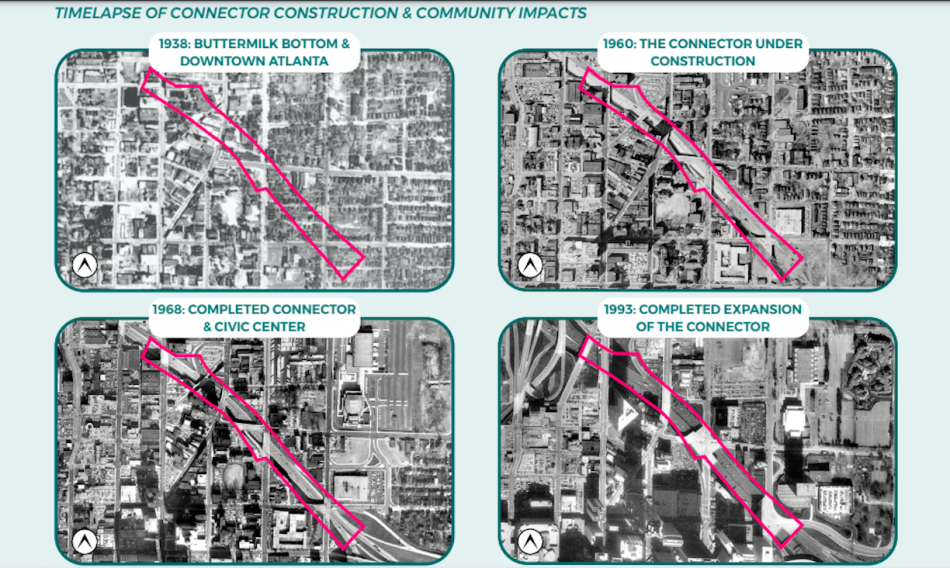 Historical perspective for the Stitch site included in today's CAP/ADID presentation. Courtesy of CAP/ADID
Historical perspective for the Stitch site included in today's CAP/ADID presentation. Courtesy of CAP/ADID
...
Follow us on social media:
Twitter / Facebook/and now: Instagram
• Downtown news, discussion (Urbanize Atlanta)




